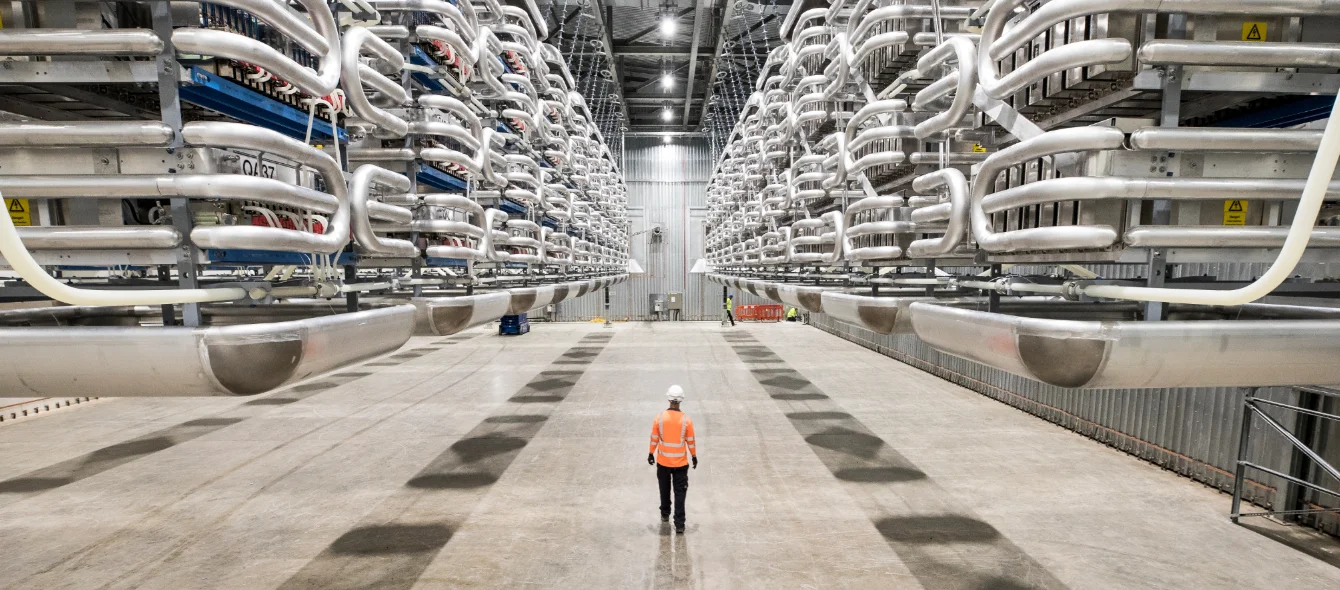North European countries are looking to take advantage of the huge, renewable energy resource that blows across the North Sea and surrounding maritime area – offshore wind.
The EU plans to expand its offshore wind-capacity from 12 to 60 GW by 2030, 20 GW of which would be built in German waters, 12 in Danish and 11.5 in Dutch sea areas. In addition, the UK has adopted a target capacity of 40 GW by 2030, four times the amount installed in the country’s waters at the end of 2019. To achieve these ambitious targets wind farms will have to be built further from shore, and while offshore wind costs are on a clear downward trajectory, building further out to sea can raise average costs, in part because the transmission lines to bring power to land need to be longer.
Spare capacity
A wind farm needs a transmission line with capacity equal to maximum output, but wind conditions are not always optimal. Other factors, such as maintenance, also affect a wind farm’s output. As a result, there is spare capacity on the transmission line.
In the UK, the world’s largest producer of offshore wind power, the average capacity factor of wind farms has increased by a third over the last decade and the newest offshore wind farms have a capacity factor of nearly 50%, according to the UK Crown Estate’s Offshore Wind Operational Report 2019. The other side of the coin, however, is that 50% on average of the transmission line’s capacity is still unused.
To address the issue, transmission system operators (TSOs) have come up with an innovative idea – multi-purpose interconnectors which connect offshore wind farms to different national electricity grids. The surplus capacity inherent in an offshore wind farm connection can be used to trade power between the two markets, making for efficient use of the infrastructure.
Germany and Denmark lead the way
The first of these lines, the Combined Grid Solution, was inaugurated by German TSO 50Hertz and Danish TSO Energinet in October. It connects two offshore substations in the Baltic Sea to each other and the existing onshore connections of offshore wind farms in Danish and German waters. The power generated by the wind farms can flow to either market and the line can be used for cross-border energy trading.
The two TSOs recently announced even more ambitious plans. On January 21 they said they had signed a letter of intent for the Bornholm Energy Island project. This would connect both countries’ grids with wind capacity of 2 GW. Initially wind farms being developed around Bornholm Island would feed power into the interconnector and later phases could see connections to other Baltic Sea states and additional offshore wind farms in the area. Meanwhile, UK and Dutch TSOs National Grid ESO and Tennet, are looking at a multi-purpose interconnector which would link both their grids and be connected to 4 GW of UK and Dutch offshore wind capacity. The two TSOs hope to have a concept defined by the end of 2021, with the aim of delivering an operational asset by 2029.
System flexibility
System flexibility plays a critical role in providing a secure and reliable flow of power. There are many ways of providing flexibility and new forms are emerging as the energy transition progresses, such as battery storage and the production of green hydrogen as a means to store excess renewable energy. However, interconnectors are a tried and tested method. Power can be traded with no transformation and little transmission loss between different markets, with different generation profiles, helping to balance supply and demand in both.
The UK for instance, currently has four interconnectors, linking its electricity system to France, Ireland and the Netherlands, with total capacity of 4 GW.
Offshore transmission grid?
However, hybrid interconnectors are the start of something much bigger.
The growth of offshore wind will mean larger electricity surpluses at times and multi-purpose interconnectors would provide the infrastructure for a wider offshore transmission grid, which would use offshore wind energy with maximum efficiency. This, in turn, would reduce the cost of the total infrastructure and thus provide lower prices for consumers. An offshore transmission grid would also fit well with wider EU plans for the development of the European electricity grid, which are presented by ENTSO-E – the European body for TSOs – every two years in its ten-year development plan (TYNDP).
The geographical distribution of renewable energy sources is uneven, with a massive offshore wind resource in northern Europe, huge solar potential in southern Europe and the majority of Europe’s hydroelectric power in the Alps.
Each renewable energy source has different generation characteristics and the differences in their variability tend to complement each other, providing a more resilient and reliable power system — if they can be connected together. A North Sea offshore transmission grid could feed into the long-distance transmission lines planned under the TYNDP, allowing the efficient use of different renewable energy sources across Europe.
